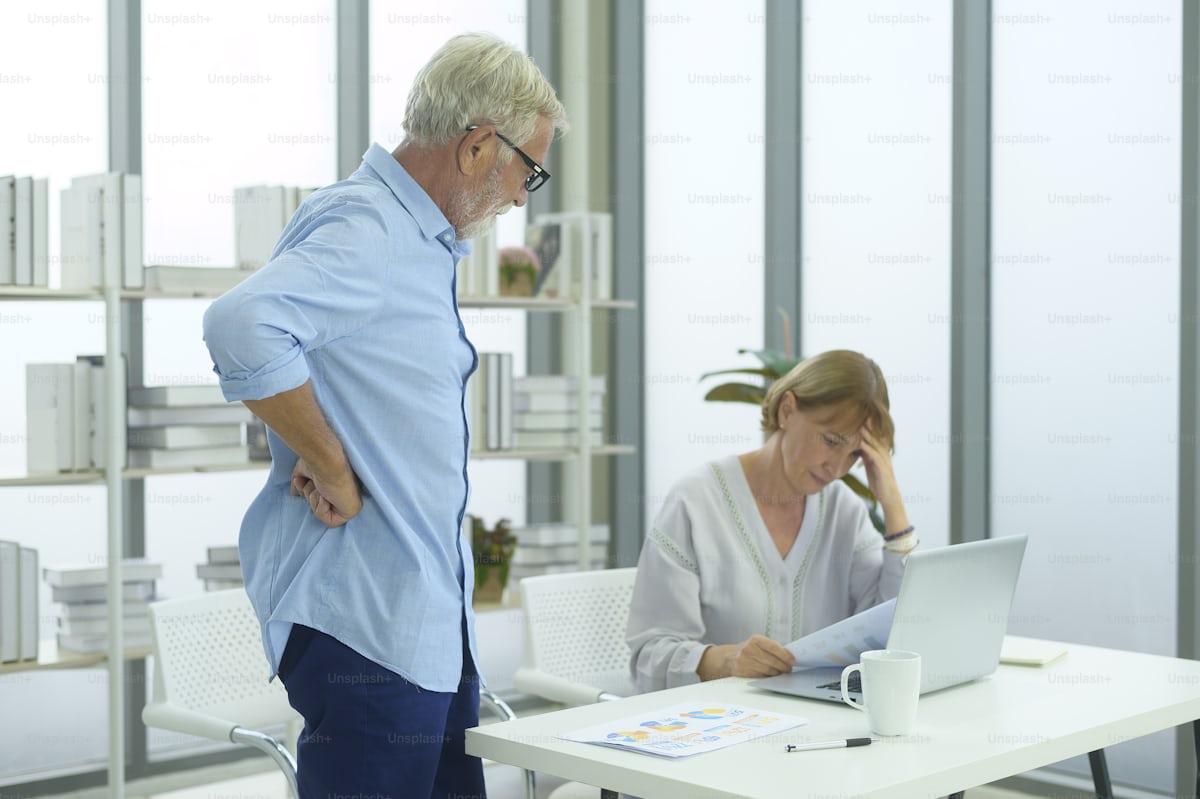Working long hours can be very difficult for someone with any type of arthritis. Spinal deformities and widespread joint pain can reduce the ability to maintain stable posture and increase demand on the body’s supporting muscles. If your arthritis is affecting your work, why not try these tips.
Here are some tips:
Using a properly positioned chair can provide effective support to your lower back. Ideally, the depth and height of the torso support should be adjustable to provide support in the correct position.
Using adjustable headrests and armrests on the chair can help relieve neck and shoulder stress, while leaving the chair in a “free-float” (open position) encourages sitting posture and relieves lower back and hip pain.
Start taking care of your eyes. If your eyes are good, neck fatigue will also be reduced. Taking care of your eyes will greatly reduce your neck pain and you will also be careful not to strain your neck when you rotate your neck while working. This will keep your neck in shape and at the same time your eyes will look good.

Using a suitable monitor arm or adjustable laptop stand can help achieve the correct monitor position. The Ergo Q-220 Laptop Stand is an advanced, ultra-lightweight laptop stand that is transportable and easily folds flat. In addition, it has the added functionality of a built-in document holder that further facilitates the user’s work.
Many alternative input devices can be used with a desktop or laptop to eliminate wrist and hand problems. Using an ergonomic keyboard supports the hands and can be an effective way to relieve stress on the wrists and hands. Also, using a different type of mouse may also help. For example, for wrist pain or grip problems, you might consider a vertical mouse like the Evoluent IV. It holds the wrist position naturally, which helps reduce stress on the hand.
Alternatively, if you find it painful to press your mouse, why not consider a low-impact external touchpad such as the GlidePoint Touchpad.
Voice-activated software helps input long documents and reduces mouse usage. Most computer systems and smartphones have built-in speech recognition options that are easier to use than most people think and can make a big difference in your situation.
While built-in options can help with certain tasks, Dragon is the market-leading natural speech software for PC or Mac. Dragon also offers a free app for Apple or Android smartphone users.

Taking regular breaks and changing your sitting position can help manage joint pain and reduce muscle stress.
If you can spend more money and buy a dress that you can control the height of you will be able to save your work space and you will be able to keep everything under control which will give you a lot of benefits. The VariDesk is a small, spring-loaded workstation that sits on top of your existing desk. It can support your laptop or PC at different heights.
Even if you move around a lot at work or sit in one place, keeping your joints in a neutral position is less likely to work. For example, for the knees, the neutral position when sitting in a chair is slightly bent and the feet are slightly forward.
For the wrist, a neutral position keeps your hand and arm in a straight line so as not to stress the nerves that run through your wrist. When working at a desk, a neutral position for your neck is to keep your head straight. “Whatever you do, focus on what’s important to you,” Lewis said. “Try to find the most comfortable position and avoid unnecessary stress.
”Maintaining any position for a long time increases the stress on the joints. “Try to vary your work as much as possible,” says Kimberly Taub, MD, professor and chair of the Department of Physical Therapy and Rehabilitation Services at the University of California, San Francisco.

If you do a lot of leg work, sit down and take frequent breaks. Another helpful tip is to stand with one leg straight with your knee to reduce the strain on your back. (Be sure to alternate between left and right feet.) If your job requires alternating body and arm positions, such as typing or carpentry. If you need to sit for work, take breaks to stand, stretch, and move around. Desks and chairs that allow you to adjust your position can help prevent unnecessary stress on your joints.
It’s a great thing so use it. It helps to move different types of goods from one place to another without wheels. You can try one when you try to carry your stuff from one place to another. It has different types of models. You can use the model you like. There are different types of devices to reduce arthritis pain. They support your joints, especially helping to reduce the load on the hands and fingers.
For example: An ergonomic computer keyboard. These keyboards are specially designed to fit around your hands and wrists. It will help stretch the nerves in your hands and reduce stress. This will help you control your hands and keep your nerves in order. Some ergonomic keyboards are adjustable, helping you find the most comfortable position.
The door handles are stretched. These clever devices keep you from wrapping your hands around your knees, which can be painful if arthritis is in your hands or fingers. If you need to carry out reference books or manuals for your work, a desktop laptop stand is a great way to lighten the load. Another new option is the e-reader, which is usually much lighter than the book and can be placed on a desk stand.
Pencil Grip If you use pencils at work, invest in a pencil grip that can create a wide grip around the pencil shaft. Some pens have handles. ergonomically designed equipment. From scissors to screwdrivers, there are many tools available to relieve joint pain. Since two patients with arthritis are not the same, it is better to try different models to choose the one that is best for you.
Reference
https://abilitynet.org.uk/news-blogs/five-top-tips-managing-arthritis-workplace
https://www.voltarengel.com/living-with-arthritis/managing-arthritis/work/
https://www.arthritis.org/health-wellness/healthy-living/managing-pain/joint-protection/tips-for-taking-care-of-your-joints-at-work
https://www.webmd.com/arthritis/features/ergonomics-at-work
https://www.arthritis.org/health-wellness/healthy-living/daily-living/work-life-balance/office-ergonomics
Tips for Managing Arthritis in the Workplace
https://www.mayoclinic.org/diseases-conditions/arthritis/in-depth/arthritis/art-20046440
https://www.medanta.org/patient-education-blog/6-ways-to-manage-arthritis-at-work
Work and Arthritis
https://www.linkedin.com/pulse/top-5-workplace-accommodations-people-living-arthritis-disclo
 using WordPress and
using WordPress and
Comments are closed